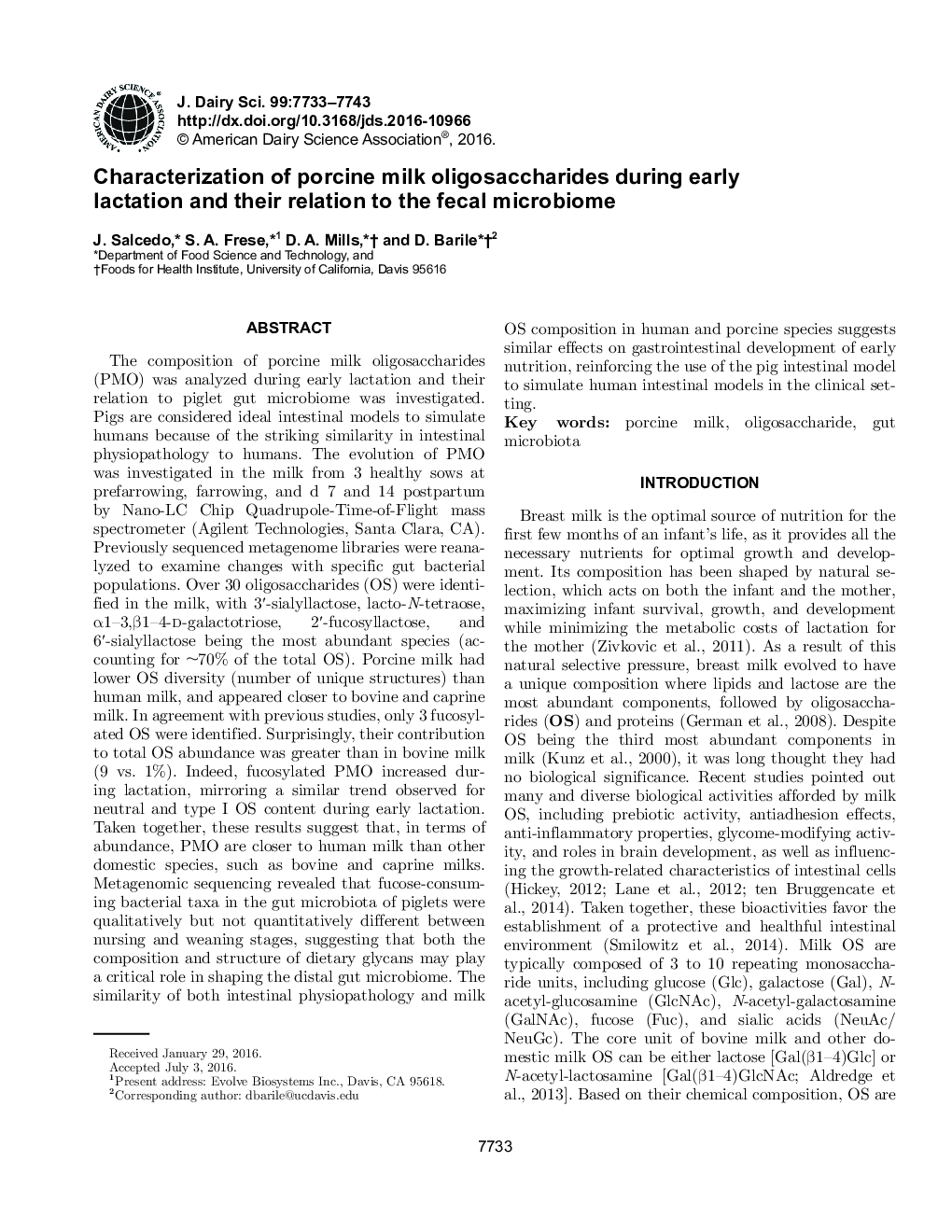| کد مقاله | کد نشریه | سال انتشار | مقاله انگلیسی | نسخه تمام متن |
|---|---|---|---|---|
| 5541808 | 1402511 | 2016 | 11 صفحه PDF | دانلود رایگان |
عنوان انگلیسی مقاله ISI
Characterization of porcine milk oligosaccharides during early lactation and their relation to the fecal microbiome
ترجمه فارسی عنوان
تشخیص الیگوساکارید های شیرخوار در دوران شیردهی و ارتباط آنها با میکروبیوم مدفوع
دانلود مقاله + سفارش ترجمه
دانلود مقاله ISI انگلیسی
رایگان برای ایرانیان
کلمات کلیدی
شیر خوک، الیگوساکارید، میکروبیولوژی روده،
موضوعات مرتبط
علوم زیستی و بیوفناوری
علوم کشاورزی و بیولوژیک
علوم دامی و جانورشناسی
چکیده انگلیسی
The composition of porcine milk oligosaccharides (PMO) was analyzed during early lactation and their relation to piglet gut microbiome was investigated. Pigs are considered ideal intestinal models to simulate humans because of the striking similarity in intestinal physiopathology to humans. The evolution of PMO was investigated in the milk from 3 healthy sows at prefarrowing, farrowing, and d 7 and 14 postpartum by Nano-LC Chip Quadrupole-Time-of-Flight mass spectrometer (Agilent Technologies, Santa Clara, CA). Previously sequenced metagenome libraries were reanalyzed to examine changes with specific gut bacterial populations. Over 30 oligosaccharides (OS) were identified in the milk, with 3â²-sialyllactose, lacto-N-tetraose, α1-3,β1-4-d-galactotriose, 2â²-fucosyllactose, and 6â²-sialyllactose being the most abundant species (accounting for ~70% of the total OS). Porcine milk had lower OS diversity (number of unique structures) than human milk, and appeared closer to bovine and caprine milk. In agreement with previous studies, only 3 fucosylated OS were identified. Surprisingly, their contribution to total OS abundance was greater than in bovine milk (9 vs. 1%). Indeed, fucosylated PMO increased during lactation, mirroring a similar trend observed for neutral and type I OS content during early lactation. Taken together, these results suggest that, in terms of abundance, PMO are closer to human milk than other domestic species, such as bovine and caprine milks. Metagenomic sequencing revealed that fucose-consuming bacterial taxa in the gut microbiota of piglets were qualitatively but not quantitatively different between nursing and weaning stages, suggesting that both the composition and structure of dietary glycans may play a critical role in shaping the distal gut microbiome. The similarity of both intestinal physiopathology and milk OS composition in human and porcine species suggests similar effects on gastrointestinal development of early nutrition, reinforcing the use of the pig intestinal model to simulate human intestinal models in the clinical setting.
ناشر
Database: Elsevier - ScienceDirect (ساینس دایرکت)
Journal: Journal of Dairy Science - Volume 99, Issue 10, October 2016, Pages 7733-7743
Journal: Journal of Dairy Science - Volume 99, Issue 10, October 2016, Pages 7733-7743
نویسندگان
J. Salcedo, S.A. Frese, D.A. Mills, D. Barile,
